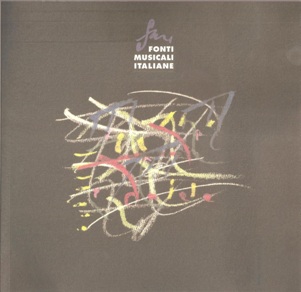Il «Giornale enciclopedico di Milano» (1782-1797) e la «Gazzetta enciclopedica di Milano» (1780-1802): due nuove fonti per la storia della musica milanese
Abstract
Il «Giornale enciclopedico di Milano» (diretto dal sacerdote genovese Gaetano Morandi, pubblicato dai fratelli Pirola due volte a settimana, e nel 1794-96 tre volte a settimana) e la «Gazzetta enciclopedica di Milano» (pubblicata da Gaetano Motta dal 1780 una volta a settimana; bisettimanale dal 1799 al 1802) si segnalano per la ricchezza delle notizie musicali in essi contenute e per il fatto di essere, almeno dal punto di vista musicologico, due esperienze giornalistiche pressoché sconosciute. Entrambi i periodici sono costituiti da una parte storico-politica (notizie politiche e cronaca cittadina) e da una parte letteraria.
Per quanto riguarda la musica, hanno parte preponderante nei due giornali le notizie relative agli spettacoli d’opera e ballo nei teatri alla Scala, Canobbiana e Arciducale di Monza. Particolare rilievo viene dato ai cantanti (per es. Luigi Marchesi), ai ballerini, agli elementi scenografici e coreografici. In uno dei primi numeri del Giornale viene inoltre fornito l’elenco dei componenti l’orchestra. Numerose anche le notizie di concerti pubblici (come le accademie di beneficenza che si svolgevano regolarmente in quaresima a favore del Pio istituto filarmonico) e privati (a corte, in palazzi nobiliari, in collegi); di cerimonie religiose con musica che avevano luogo nelle chiese della città, spesso in particolari occasioni (esequie di Maria Teresa, Giuseppe II, Leopoldo II, nozze, Te Deum per la vittoria delle armate austriache ecc.); di processioni con musica; di esecuzioni oratoriali. I due periodici seguono con interesse l’attività dei maestri che in quegli anni si succedettero alla guida della cappella del Duomo: Giuseppe Sarti e Carlo Monza. A queste notizie si devono aggiungere gli avvisi relativi alla vendita di strumenti e di edizioni musicali, sia prodotte da calcografie milanesi, sia provenienti dall’estero. Infine, tanto il Giornale quanto la Gazzetta pubblicano segnalazioni e più raramente recensioni o estratti di nuovi libri di argomento musicale, come per es. i trattati di Bertezen, Pizzati, Vallotti, i testi storici di Mattei o Gervasoni, le opere critiche di Arteaga o Manfredini.
Tutte queste notizie vengono discusse nell’introduzione del presente saggio; in appendice, vengono riportate per esteso le notizie pertinenti alla musica, escludendo gli avvisi editoriali e commerciali.
*****
The “Giornale enciclopedico di Milano” and the “Gazzetta enciclopedica” di Milano: two new sources for the history of music in Milan
The “Giornale enciclopedico di Milano” (edited by the Genoese priest Gaetano Morandi and published by the Pirola brothers twice-weekly, and three times a week from 1794-96), and the “Gazzetta enciclopedica di Milano” (published by Gaetano Motta once a week from 1780; twice a week from 1799 to 1802) are notable both for the wealth of musical news reported and for the fact of being two journalistic initiatives that are almost unknown, at least from the viewpoint of musicological research. Both periodicals contain a historical-political section (political news and local events) and a literary section. As far as musical events are concerned, the two publications give more space to reviews and criticisms of opera and ballet performances at the Scala and Canobbiana theatres of Milan and at the Teatro Arciducale of Monza. Plentiful information is also given on the singers (e.g. Luigi Marchesi), dancers and choreographic and scenographic elements; in one of the first numbers of the “Giornale”, there is also a list of the orchestra members. Ample coverage is given as well to public concerts (such as the charity concerts held regularly in Lent for the benfit of the Pio Istituto Filarmonico), to private concerts (held at court, in the palaces of the nobility and in colleges), to the religious ceremonies with music which were held in the churches of Milan, especially on particular occasions (the funerals of Maria Theresa, of Joseph II and of Leopold II; weddings; Te Deum for victories of the Austrian armies, etc); to processions accompanied by music and to performances of oratorio. There are also regular reports in both periodicals on the activities of the two maestri who succeeded each other as choirmaster of Milan cathedral: Giuseppe Sarti and Carlo Monza. In addition to these news items, there are notices announcing the sale of instruments and musical editions, either produced by Milanese engravers or imported from abroad. Finally, both the “Giornale” and the “Gazzetta” give information on new books of musical interest, sometimes publishing reviews and extracts: for instance, the treatises of Bertezen, Pizzati and Vallotti, the historical texts of Mattei and Gervasoni, the critical essays of Arteaga and Manfredini.
All this information is discussed in the introduction to the paper, while the news items concerning music (with the exception of editorial and commercial announcements) are presented in detail in the appendices.
##submission.downloads##
Pubblicato
Fascicolo
Sezione
Licenza
© CIDIM
Tutti i diritti riservati


